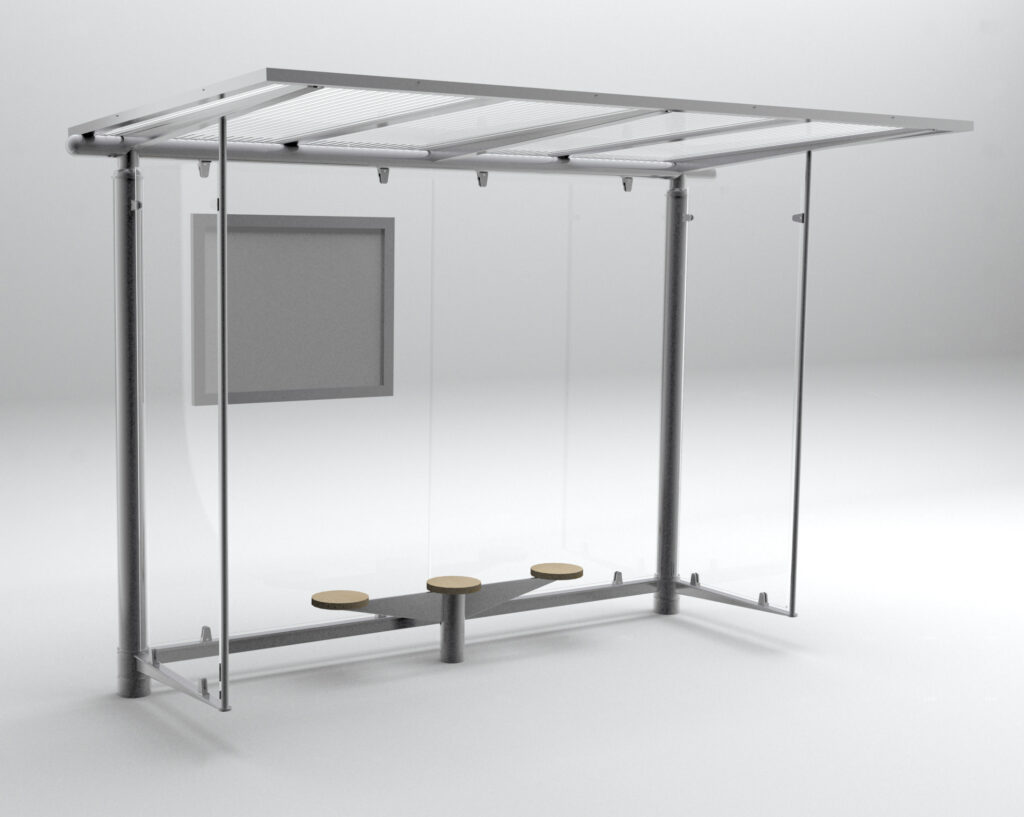In this article, we'll review the advantages and disadvantages of steel bus stops. The steel bus stops offer exceptional durability and strength, but they can also present problems of rust and maintenance. Discover the strengths and weaknesses of these essential public transport structures.
Chantier XXL: French mega-container ship
[arve url="https://www.youtube.com/embed/aV9NwC_ZGBQ "/]
Which bus shelter should you choose?
When choosing a bus shelter for a community, it is important to consider several criteria:
1. Capacity : It's essential to determine the number of people who will use this bus shelter on a daily basis. If it's a high-traffic area, a larger shelter will be needed to accommodate more passengers.
2. Comfort : Bus shelters must offer a minimum of comfort to users. Make sure there's seating, protection from the elements (rain, wind, sun), and possibly features such as electrical outlets, Wi-Fi connection or solar panels for lighting.
3. Accessibility : It's vital that the bus shelter is accessible to people with reduced mobility. Check that the shelter has an access ramp, a reserved area for wheelchair users and Braille information for the visually impaired.
4. Safety : Make sure that the bus shelter is well lit at night to ensure the safety of users. If possible, opt for a model with surveillance cameras to deter acts of vandalism.
5. Design and integration : The bus shelter must be aesthetically pleasing and blend harmoniously into its surroundings. Choose a model that matches the community's visual identity, in terms of shape, color and materials used.
6. Interview: To ensure the durability of your bus shelter, it's important to choose a model that's easy to maintain. Choose materials that are weather-resistant and easy to clean.
In summary, the choice of a bus shelter for a community should take into account capacity, comfort, accessibility, safety, design, integration and maintenance. It is advisable to call on experts or specialist suppliers for advice tailored to the specific needs of each community.
What materials are used to make a AbriBus?
A bus shelterBus shelters are generally made from a combination of different materials. The most commonly used materials are metal, glass and plastic.
The metal is used for the bus shelter structure, including posts, supports and frames. Metal offers excellent durability and weather resistance, enabling the bus shelter to remain in place even in windy conditions.
The glass is used for transparent or glazed bus shelter panels. These panels give passengers an unobstructed view of their surroundings, while protecting them from the weather.
Plastic is used for the side and rear panels of the bus shelter. Plastic is a lightweight, durable material that offers good protection against the elements. What's more, it can be easily customized with specific information, advertising or logos.
In short, a AbriBus is mainly made from metal, glass and plastic to ensure strength, transparency and protection from the elements.
What are the dimensions of an AbriBus?
The dimensions of a AbriBus can vary according to various factors, such as location and specific model. In general, a standard AbriBus is about 4 to 5 meters long and a width of around 1.5 to 2 metres. The height of a bus shelter is generally around 3 metres..
These dimensions provide a structure large enough to shelter passengers from the elements, while remaining relatively compact for easy installation in urban areas. AbriBus are designed to be accessible and comfortable, offering users a shaded or rain-protected area while they wait for their bus.
It should be noted that some municipalities may have specific standards governing the dimensions of AbriBus to ensure aesthetic and functional coherence in the urban environment. It is therefore advisable to check with local authorities for precise information on the dimensions of AbriBus in a given area.
In conclusion, steel bus stops have both advantages and disadvantages.
On the one hand, their robustness and durability make them a solid option for urban infrastructures. They are able to withstand weather, wear and vandalism, guaranteeing long-term use. What's more, their steel design can offer a modern, harmonious aesthetic that blends seamlessly into the urban landscape.
On the other hand, the use of steel can entail higher manufacturing and installation costs. In addition, steel can be more prone to corrosion, requiring regular and potentially costly maintenance. In addition, their weight and bulk can make them more difficult to move or refit.
In conclusion, steel bus stops are a solid, durable option, but they also require careful consideration in terms of cost and maintenance. The choice between steel and other materials should be based on the specific needs of each community and a thorough evaluation of the advantages and disadvantages of each option.








